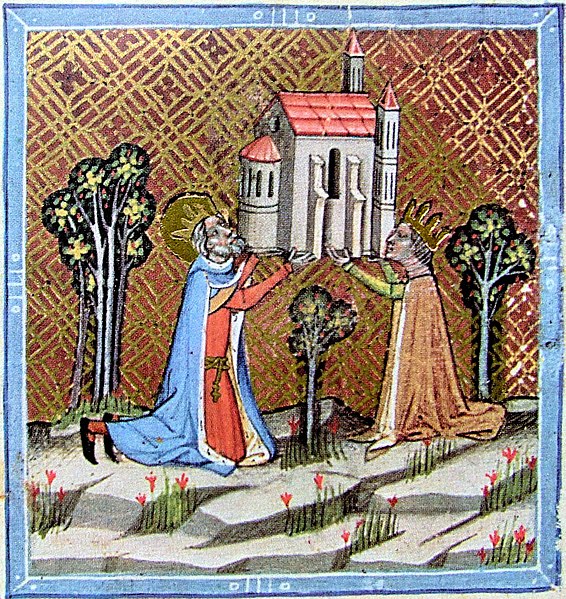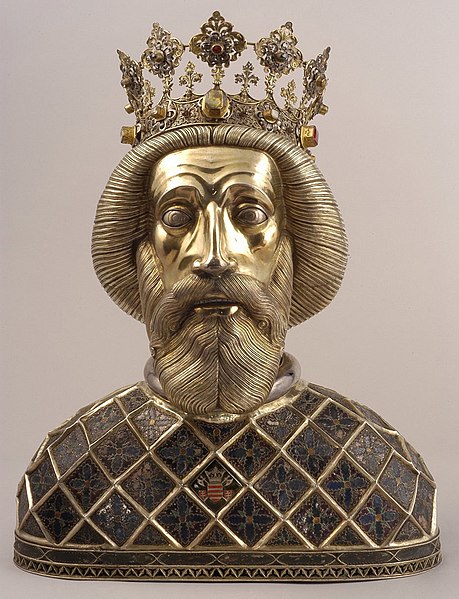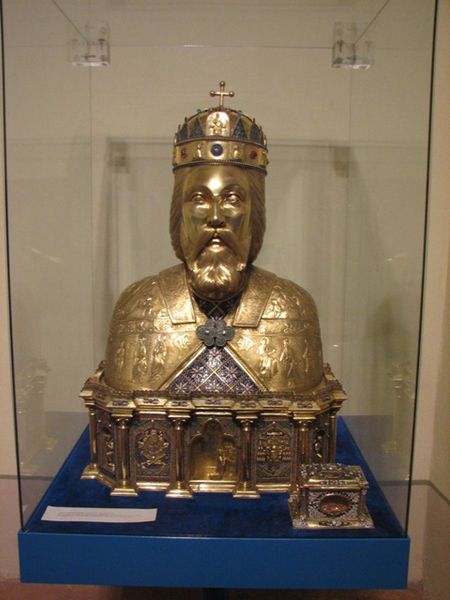Kingdom of Hungary (1000–1301)
The Kingdom of Hungary came into existence in Central Europe when Stephen I, Grand Prince of the Hungarians, was crowned king in 1000 or 1001. He reinforced central authority and forced his subjects to accept Christianity. Although all written sources emphasize only the role played by German and Italian knights and clerics in the process, a significant part of the Hungarian vocabulary for agriculture, religion, and state matters was taken from Slavic languages. Civil wars and pagan uprisings, along with attempts by the Holy Roman emperors to expand their authority over Hungary, jeopardized the new monarchy. The monarchy stabilized during the reigns of Ladislaus I (1077–1095) and Coloman (1095–1116). These rulers occupied Croatia and Dalmatia with the support of a part of the local population. Both realms retained their autonomous position. The successors of Ladislaus and Coloman—especially Béla II (1131–1141), Béla III (1176–1196), Andrew II (1205–1235), and Béla IV (1235–1270)—continued this policy of expansion towards the Balkan Peninsula and the lands east of the Carpathian Mountains, transforming their kingdom into one of the major powers of medieval Europe.

King St Stephen and his wife founding a church at Óbuda
Rose window on the Gothic chapel in the Royal Castle at Esztergom (late 12th century)
Relief of Matthew the Apostle from the Romanesque church of Ják (13th century)
Mongols chasing King Béla IV after the Battle of Mohi
Ladislaus I, also known as Saint Ladislas, was King of Hungary from 1077 and King of Croatia from 1091. He was the second son of King Béla I of Hungary and Richeza of Poland. After Béla's death in 1063, Ladislaus and his elder brother, Géza, acknowledged their cousin Solomon as the lawful king in exchange for receiving their father's former duchy, which included one-third of the kingdom. They cooperated with Solomon for the next decade. Ladislaus's most popular legend, which narrates his fight with a "Cuman" who abducted a Hungarian girl, is connected to this period. The brothers' relationship with Solomon deteriorated in the early 1070s, and they rebelled against him. Géza was proclaimed king in 1074, but Solomon maintained control of the western regions of his kingdom. During Géza's reign, Ladislaus was his brother's most influential adviser.
Herm of Saint Ladislaus containing his skull, held in the Basilica of Győr
Saint Ladislaus's reliquary of the late 19th-century (in the Cathedral-Basilica of Oradea, Romania)
After the Battle of Kerlés in 1068, Saint Ladislaus is fighting a duel with a Cuman warrior who kidnapped a girl (Chronicon Pictum, 1358)
Angels crowning King Saint Ladislaus (Chronicon Pictum, 1358)






